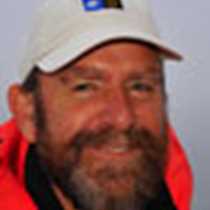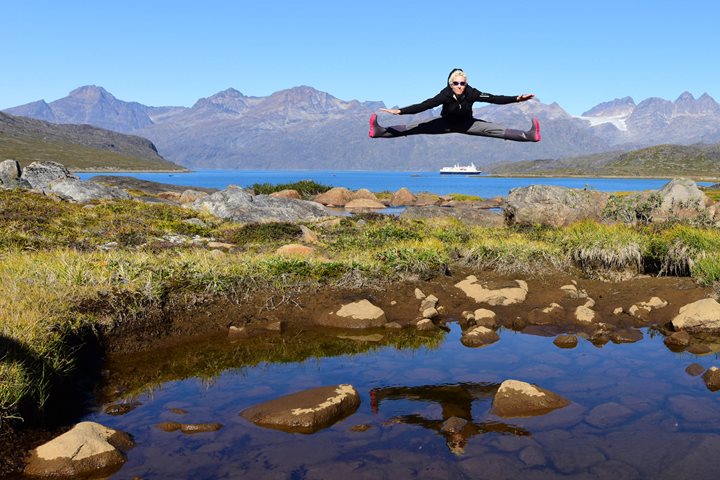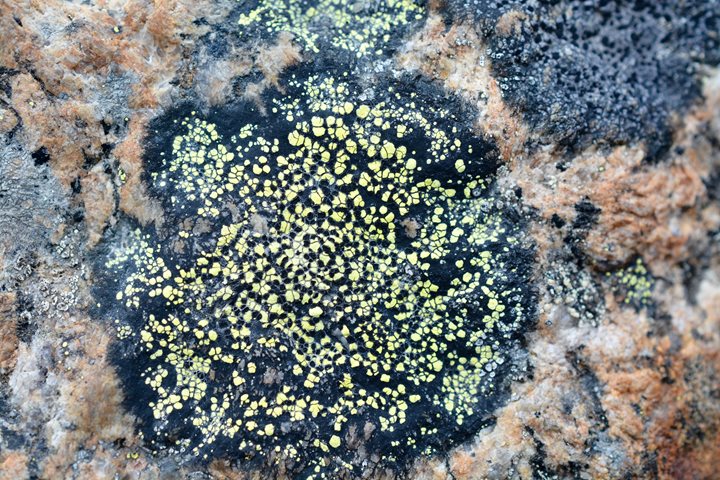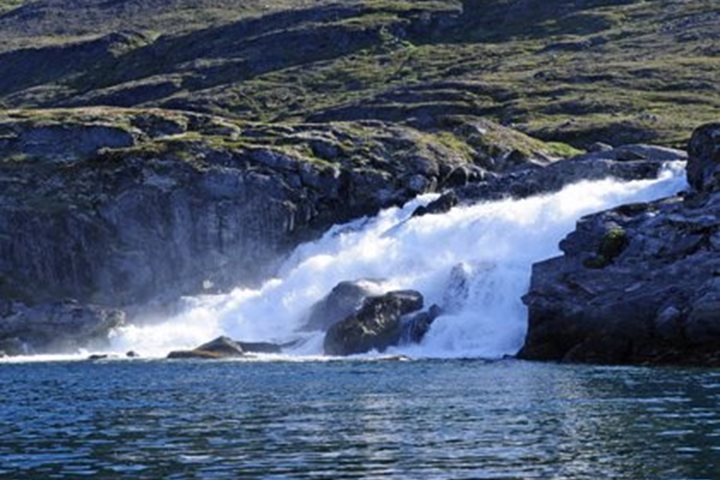Last night a powerful southeast wind helped us surf north along the coast of West Greenland. Dreaming of Viking longships in pack ice, we enjoyed untroubled slumber, our loyal ship riding the surging seas with its customary nonchalance.
By lunchtime we were approaching the rocky headland on which the town of Nuuk is perched, at the head of a remarkable fjord system. The mixed currents here between fjord and open ocean feed a sea crowded with capelin, the rich biro-sized baitfish which swarm here in the summer months, the ultimate fast food for so many larger sea creatures. Sure enough, the ship passed many harp seals swimming among the shoals; this seal pursues capelin from the Davis Strait to the Barents Sea as part of its own annual migration. Harp seal was itself a key resource for the Inuit who dwelt along this coastline for thousands of years, and who had learnt to hunt them with harpoons from their speedy, lightweight kayaks.
The seals are still here, but where are the hunters of yore? They are urban folk now, as we discovered once we had docked. We travelled by small yellow buses to the old colonial buildings on the far shore of the peninsula which gives Nuuk its native name. Here was a gem of a museum whose exhibits showed just how deftly the Inuit peoples had mastered their environment: clothes made of caribou pelts, seal hide and bird skins, leather snow goggles, perfect harpoon toggles made of walrus tusk , arrows, paddles and of course the crucial kayak hewn and whittled from driftwood logs which had crossed the Arctic Ocean from Siberia. Then a tour of the town by bus: blue, yellow and red houses, tarmac roads, apartments, offices, administrative buildings, hospital, school, airport. All very modern, very tidy, very organized.
Walking groups toured the town on foot, and enjoyed the hospitality of a few welcoming locals, accompanying generous coffee and cakes (“Kaffe-Mik”) with tales of the recent past and how life has changed in a few high-speed decades. We returned past the crowded harbor, full of motor launches, yachts and giant sea-going trawlers, and ran the gauntlet of monster trucks swinging huge containers as we rejoined the mother ship. But the ghost of all those elegant kayaks and the resourceful people who paddled them into freezing waters, still haunt me as I gaze at all this technology. They have been sucked into the 21st century and cultural oblivion; they paddle a new path now, into a modern, relentless world that no longer needs their skills honed over millennia.







